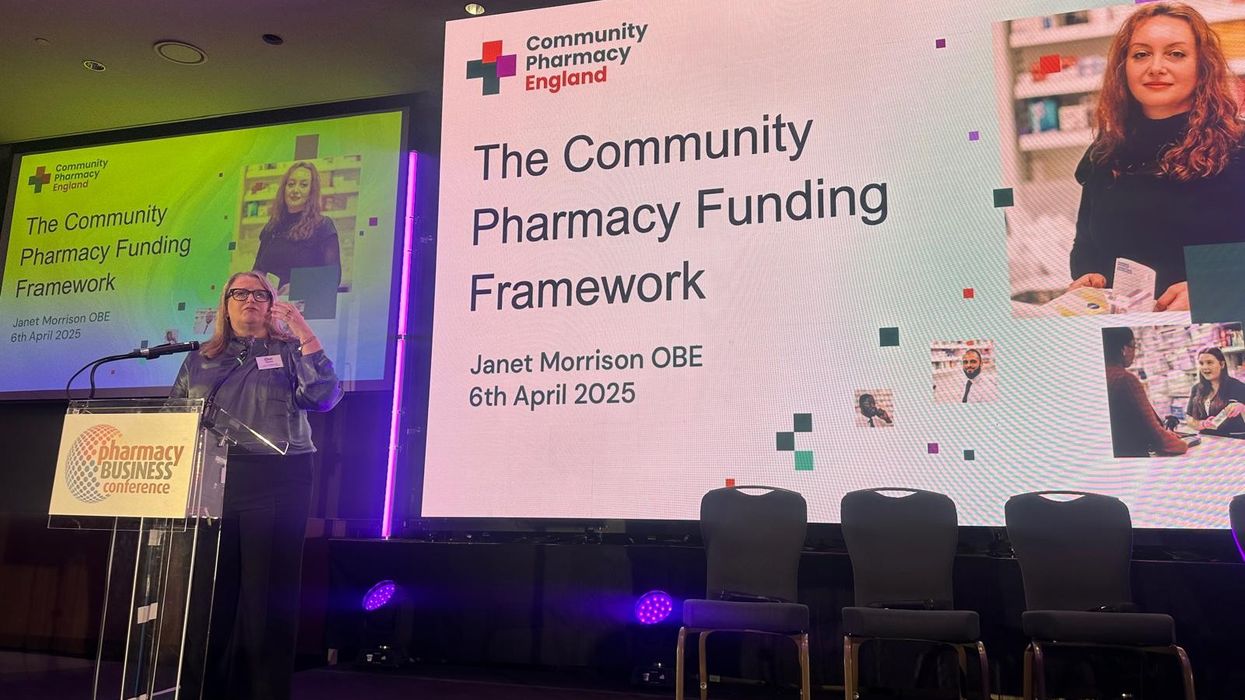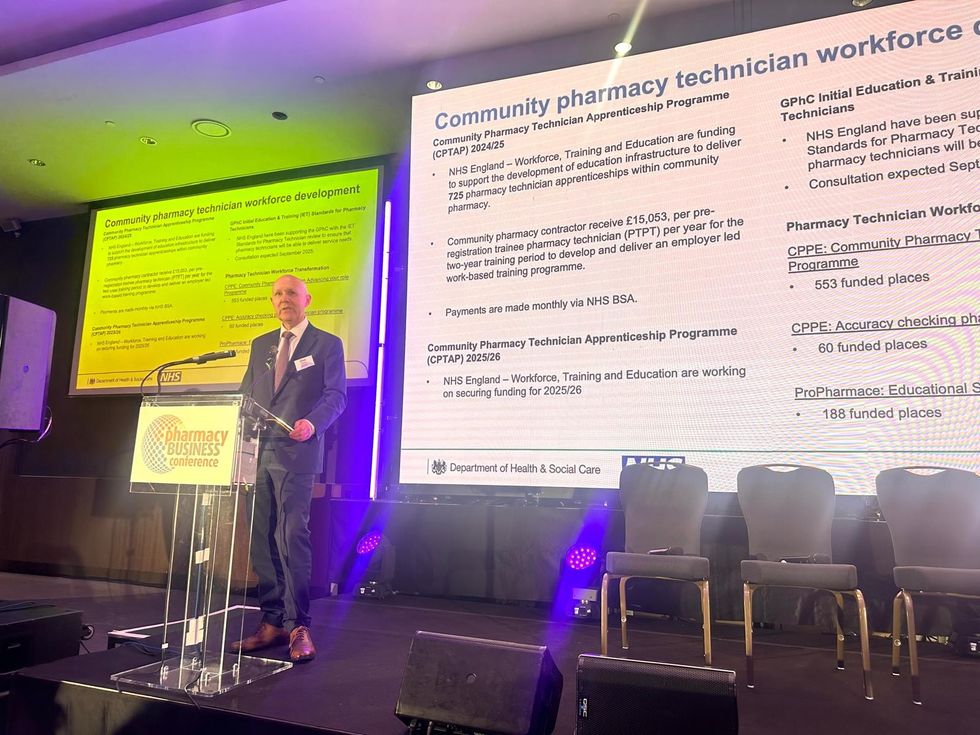Optometrist Roshni Patel provides an insight into how eyes can be affected by different types of headaches and how pharmacy teams can help…
Headache queries usually formed roughly 80 per cent of ‘the reason for visit’ for patients that I used to see in my practice. When digging deeper into the types of headaches, the usual pattern was found to be a dull ache which worsened as the day went on, or a pain that became more intense towards the end of the week across the front of the head and temples in particular. A number of different headaches and other conditions can cause pain behind one or both eyes.
Frontal headaches
Frontal lobe headaches manifest as mild to severe pain in the forehead or temples and can occur due to stress. There are a wide range of causes of frontal headaches, including infections, dehydration, poor posture, or eye strain – in which eyes constantly focused on a screen can become fatigued.When a child begins to strain their spine and eyesight, mothers often blame the computers and posture, but vitamin D deficiency can be one of the reasons for softening the bones of children and weakening their vision. If you or your child is experiencing any issues with your eyesight, get them tested as you may need glasses or contact lenses. Dailies total 1 multifocal lenses are an example of lenses that are commonly used.
Cluster headaches
Cluster headaches are a series of brief headaches over the course of a day, usually on one side of the head. These can be very painful and may manifest additional symptoms, including red eyes or tearing, as well as sweating, skin flushing, and congestion issues.I had a patient who had, over a period, episodes where he kept being woken up by an intense pain behind and around one eye; he also had an associated red and watery eye. On further questioning I noted that it would occur at the same time each night. These are typical symptoms of a cluster headache.
He underwent a lot of tests, but everything came back normal and was told to manage the pain with prescribed pain killers.
Occipital neuralgia
Occipital neuralgia is a headache beginning in the upper neck or back of the head, and moving behind the eyes and across the scalp, incorporating bursts of pain either with an ongoing headache or on their own.It often affects those prone to migraines and comes due to irritation or injury of the occipital nerves. There may be sensitivity to light, and movement may cause additional pain.
Not all headaches are isolated symptoms. Some may be indications of wider issues and it is important for pharmacy teams to refer these patients to their doctor or optometrist if they are manifesting additional symptoms.
Anterior uveitis
Anterior uveitis is a form of uveitis, in which inflammation occurs in the uvea, part of the eye. It usually begins slowly, over several hours or days, resulting in eye redness and pain in or around the eye, sensitivity to light, and possible blurry vision – usually focused on one eye.If a customer is experiencing these symptoms, they should be referred.
Optic neuritis
Optic neuritis occurs when inflammation damages the optic nerve. The patient may experience loss of vision in one eye and in specific fields of view, as well as colour vision loss. An ache behind the eye usually develops and may be worsened by eye movement.It can be a result of several different diseases, particularly multiple sclerosis, so if a customer is experiencing any of the symptoms, it is important that they have this reviewed with their optometrist as soon as possible.
Glaucoma
Acute angle-closure glaucoma may occur suddenly and without warning. Symptoms may include nausea and vomiting, as well as severe head and eye pain and vision loss. The patient may experience blurred vision and the sudden appearance of rainbow coloured circles around bright lights.If a customer is listing these symptoms, they should contact the hospital eye service immediately.
Papilloedema
Papilloedema is a swelling of the optic nerve, due to raised intracranial pressure, that may initially have no symptoms, but in which vision problems and headaches are likely to develop over time, along with nausea. It can be a result of injury, or because of conditions including brain tumours, so regular eye examination is vital.Temporal arteritis
Temporal arteritis is a form of inflammation of the blood vessel walls leading to constrictions in arteries. It can be identified by a constant severe, throbbing and burning pain in the temples that can worsen when touching the area. This pain is usually noticed by patients when brushing their hair.The pain is most often on one side of the head and may be accompanied by fatigue, fever, loss of weight, and possibly aching in the jaw muscles. If customers are experiencing this, advise them to seek out advice from their GP.
Migraines
Migraines are a specific and severe form of headache and are accompanied by nausea, vomiting, and an increased sensitivity to light and sound can be common. There are different types of migraines including “migraines with aura”, in which the migraine is preceded by effects such as flashing lights in vision, blind spots, or other changes in vision in both eyes.The most common type are “migraines without aura” that provide no specific warning sign, and finally the third is “migraine aura without headache”, which is where patients can experience the symptoms of a migraine without the headache itself.
While many general headaches can be treated with painkillers and over-the-counter medication from your local pharmacy, it’s best to remind customers of steps they can take to help prevent and reduce a headache such as by adopting a healthy lifestyle.
This is particularly useful for those that are experiencing headaches on a regular basis that aren’t as a result of a wider medical problem.
Roshni Patel is professional services manager at Lenstore.














 Health Secretary Wes Streeting addresses Pharmacy Conference via video
Health Secretary Wes Streeting addresses Pharmacy Conference via video  David Webb, chief pharmaceutical officer of NHS England
David Webb, chief pharmaceutical officer of NHS England Shailesh Solanki, executive editor of Pharmacy Business
Shailesh Solanki, executive editor of Pharmacy Business L-R: Yasmin Karsan, Pritee Panchmatia and Fin McCaul
L-R: Yasmin Karsan, Pritee Panchmatia and Fin McCaul  L-R: Baba Akomolafe, Rachna Chhatralia, Patricia Tigenoah-Ojo and Raj Matharu
L-R: Baba Akomolafe, Rachna Chhatralia, Patricia Tigenoah-Ojo and Raj Matharu L- R: Nicola Stockmann, Robert Townsend, Atul Patel and Amerjit Singh
L- R: Nicola Stockmann, Robert Townsend, Atul Patel and Amerjit Singh Wole Ososami, lead pharmacist at Westbury Chemist
Wole Ososami, lead pharmacist at Westbury Chemist

